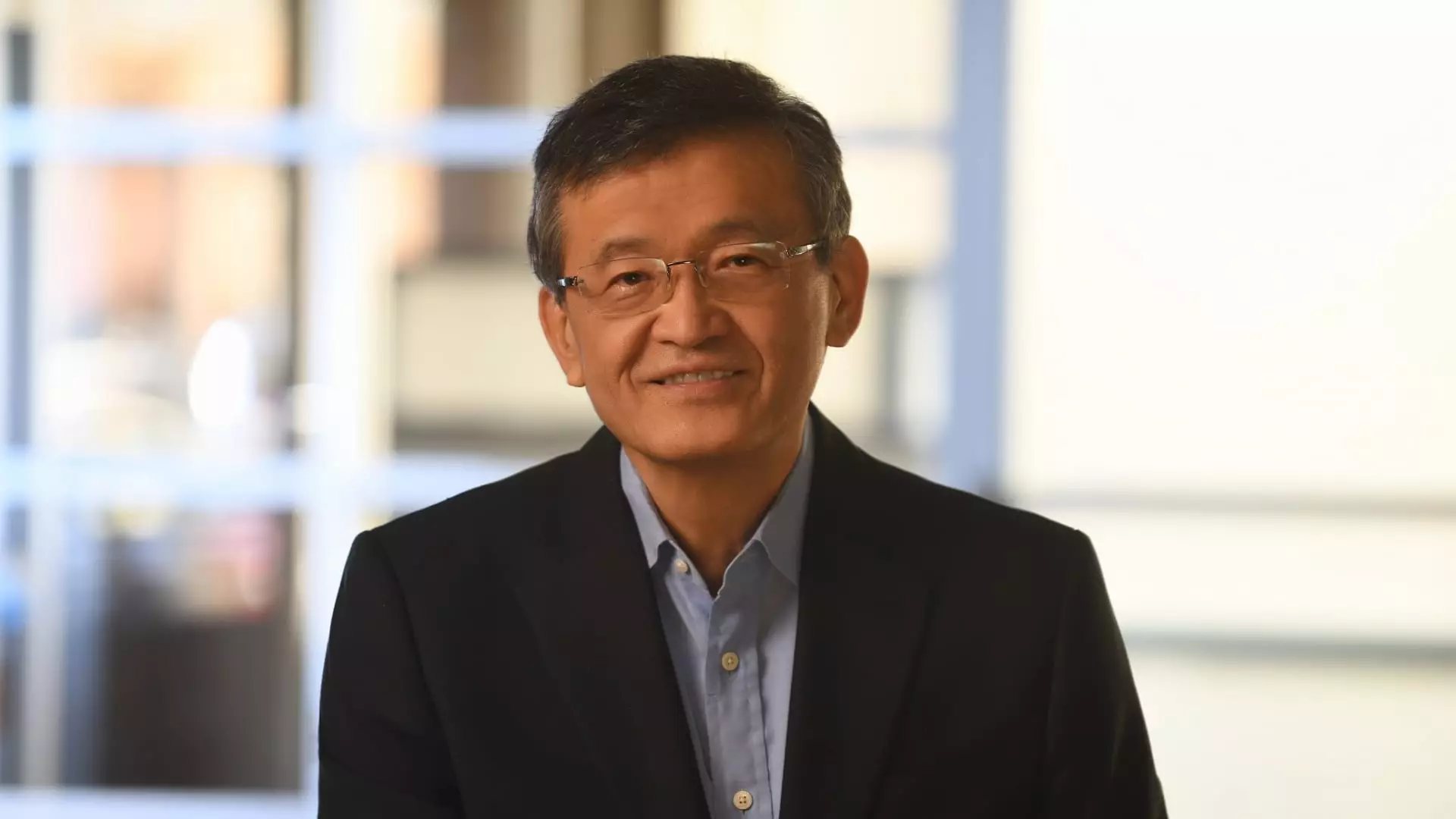On a day marked by significant volatility in the semiconductor sector, Intel made headlines by appointing Lip-Bu Tan as its new CEO. This transition comes after what can only be described as a catastrophic four-year period under the leadership of Pat Gelsinger. Tan’s arrival seems to be a glimmer of hope for the beleaguered tech giant, raising the stock by an impressive 12% in after-hours trading—a remarkable testament to investors’ optimism, yet one must ask: is this renewal superficial, or could it lead to meaningful change?
What makes Tan an interesting choice is not just his previous experience as the CEO of Cadence Design Systems, the leading company in electronic design automation software, but also his previous role as a board member at Intel, which he left only a year ago. This dual perspective—having operated within and now returning to Intel—gives Tan a unique vantage point, yet it raises serious questions about his capacity to steer Intel in a new direction. Will he merely toe the company line, or will he be unafraid to challenge the existing corporate culture that has led to this downfall?
Confronting the Legacy of Leadership Failure
Tan’s appointment makes him the fourth permanent CEO in a mere seven years, following a string of leadership miscalculations that have cost Intel dearly. The departure of Brian Krzanich in 2018, after a scandal, was only the beginning. His successors, Bob Swan and Pat Gelsinger, followed with their own sets of ambitious plans, none of which have translated into success. Under Gelsinger, the vision to transform Intel into a foundry capable of manufacturing chips for other companies appeared grandiose but failed to deliver tangible results. The bottom line: Intel has struggled with declining revenue while competing firms, particularly Nvidia, have surged ahead.
The turbulent history is a double-edged sword for Tan. On one hand, he inherits a legacy of failures and miscalculations that provide a low baseline for improvement. On the other, any mistake will inevitably come under intense scrutiny. Given the prior leadership’s inability to adapt to fast-evolving industry trends, most critically in artificial intelligence (AI), Tan faces a mountain of expectations that may prove unattainable.
Strategic Initiatives: Calculated Risks Ahead
In his first statements following the appointment, Tan emphasized the necessity for “calculated risks” to disrupt the status quo and leapfrog over competition. This phrasing is essential; it suggests an awareness of the aggressive pivots that must occur to reclaim market share lost to competitors. Yet “calculated risks” is often corporate jargon that hints at indecision or over-cautiousness. For Intel to regain its foothold, it cannot simply adjust its strategies at the margins; it needs a radical overhaul in its approach to innovation and market expansion.
Tan speaks about “doubling down” in areas where Intel has momentum, which implies that the company is not starting from scratch. Yet, it’s critical that he identifies which segments are truly advantageous. For instance, while Intel boasts expertise in traditional chips, the burgeoning demand for AI hardware—where Nvidia has decisively conquered the market—remains a chasm. If Tan merely tweaks the existing product lines rather than reimagining Intel’s portfolio to better fit the modern landscape, he risks failure.
Investor Sentiment and Market Reputation
The investor response to Tan’s hiring was swift, driving the stock price higher. However, such a reaction can sometimes be misleading and dangerously optimistic. The reality of operating under the shadow of competitors like Nvidia—whose stock price has skyrocketed—should be a sobering reminder for Tan and his team. After all, investor enthusiasm can easily dissipate if results do not reflect bold and transformative actions.
Additionally, the challenges presented by rising tariffs and a fickle marketplace, where clients “digest inventory,” should not be overlooked in Tan’s strategic conversations. For Intel to maintain momentum, it needs more than just a charismatic leader; it requires a transparent roadmap of recovery that aligns with market realities.
While the appointment of Lip-Bu Tan may signal a turning point for Intel, the path ahead is fraught with complexity. It remains to be seen whether he can navigate through the corporate morass to deliver genuine change, ultimately determining whether this is a new dawn for Intel or merely a continuation of its turbulent saga.

